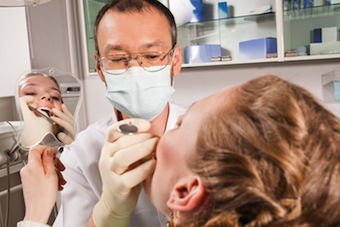The Most Underrated Value Creation Tool In Dentistry
The intra-oral camera, panoramic digital X-rays and other technologies like them are phenomenal tools when it comes to educating patients about their oral health condition. Being able to get an up-close detailed look at their mouth from a perspective they don’t often get to see can have an immediately enlightening effect.
But there is another tool—an ultra-low-cost, ultra-low-tech tool—that can also be a powerful patient motivator: the simple hand-held mirror. When a hygienist says to a patient “you have some staining in this area” while she is working, the words alone don’t necessarily carry much impact.
However, put a mirror in the patient’s hand and show them what you mean and you create a memorable moment. Also, I recommend that when doing a comprehensive new patient exam, in addition to using your digital tools, you give the patient a mirror and ask them to identify what they would like to see improved in their smile. When you do this, you are wondering and learning together and you, as a clinician, get to see through the patient’s eyes. This is also how you create what I call “mirror value.”
Unlike the intra-oral camera, which can be effective because it offers a new perspective, the mirror is effective precisely because it does give the patient the perspective they are used to seeing. That means when they go home and brush or floss, or apply lipstick, or just check for something stuck between their teeth, they are more likely to see what you pointed out to them. The mental seed will have been planted.
So by all means, use the best technology you have available to you to provide a patient with a comprehensive tour of their mouth. But don’t forget to replicate the home experience by bringing out the humble mirror. Until intra-oral cameras become standard in the average home, this is still the way most people see their mouths, and it’s a great way to create a lasting mental image.
SPEAR NAVIGATOR
Transform how your practice runs by engaging the team through
coaching and training
A guided path to excellence through structured coaching and self-guided resources that will align your team, streamline processes and drive growth. Transform your practice by implementing Spear’s proven playbooks for developing and retaining a high-performing dental team.

By: Imtiaz Manji
Date: January 17, 2014
Featured Digest articles
Insights and advice from Spear Faculty and industry experts



